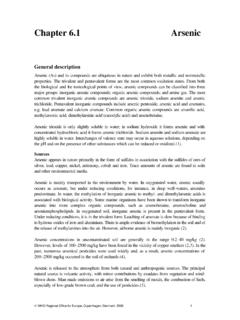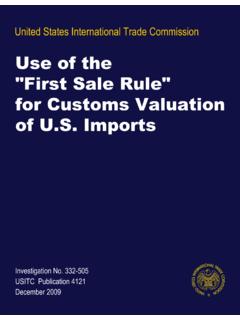Transcription of Answers to End-of-Chapter Problems - …
1 Copyright 2013 Pearson Addison-Wesley. All rights reserved. PART THREE Answers to End-of-Chapter Problems Copyright 2013 Pearson Addison-Wesley. All rights reserved. 61 chapter 1 Answers TO QUESTIONS 1. The interest rate on three-month Treasury bills fluctuates more than the other interest rates and is lower on average. The interest rate on Baa corporate bonds is higher on average than the other interest rates. 2. The lower price for a firm s shares means that it can raise a smaller amount of funds, so investment in facilities and equipment will fall. 3. Higher stock prices mean that consumers wealth is higher, and they will be more likely to increase their spending. 4. They channel funds from people who do not have a productive use for them to people who do, thereby resulting in higher economic efficiency. 5. The United States economy was hit by the worst financial crisis since the Great Depression.
2 Defaults in subprime residential mortgages led to major losses in financial institutions, producing not only numerous bank failures, but also the demise of two of the largest investment banks in the United States. These factors led to the Great Recession which began late in 2007. 6. The basic activity of banks is to accept deposits and make loans. 7. Savings and loan associations, mutual savings banks, credit unions, insurance companies, mutual funds, pension funds, and finance companies. 8. Answers will vary. 9. In the period from 2007 to 2011, both inflation and interest rates have generally trended downward compared to before that period. 10. The data in Figures 3, 5, and 6 suggest that real output, the inflation rate, and interest rates would all fall. 11. Businesses would increase investment spending because the cost of financing this spending is now lower, and consumers would be more likely to purchase a house or a car because the cost of financing their purchase is lower.
3 12. No. It is true that people who borrow to purchase a house or a car are worse off because it costs them more to finance their purchase; however, savers benefit because they can earn higher interest rates on their savings. 13. Because the Federal Reserve affects interest rates, inflation, and business cycles, all of which have an important impact on the profitability of financial institutions. 14. The deficit as a percentage of GDP has expanded dramatically since 2007; in 2010 the deficit to GDP ratio was 10%, well above the historical average of around 2% since 1950. 15. It makes foreign goods more expensive, so British consumers will buy fewer foreign goods and more domestic goods. 62 Mishkin The Economics of Money, Banking, and Financial Markets, Tenth Edition Copyright 2013 Pearson Addison-Wesley. All rights reserved. 16. It makes British goods more expensive relative to American goods.
4 Thus American businesses will find it easier to sell their goods in the United States and abroad, and the demand for their products will rise. 17. Changes in foreign exchange rates change the value of assets held by financial institutions and thus lead to gains and losses on these assets. Also changes in foreign exchange rates affect the profits made by traders in foreign exchange who work for financial institutions. 18. In the mid- to late 1970s and in the late 1980s and early 1990s, the value of the dollar was low, making travel abroad relatively more expensive; thus it was a good time to vacation in the United States and see the Grand Canyon. With the rise in the dollar s value in the early 1980s, travel abroad became relatively cheaper, making it a good time to visit the Tower of London. This was also true, to a lesser extent, in the early 2000s.
5 19. When the dollar increases in value, foreign goods become less expensive relative to American goods; thus you are more likely to buy French-made jeans than American-made jeans. The resulting drop in demand for American-made jeans because of the strong dollar hurts American jeans manufacturers. On the other hand, the American company that imports jeans into the United States now finds that the demand for its product has risen, so it is better off when the dollar is strong. 20. As the dollar becomes stronger (worth more) relative to a foreign currency, one dollar is equivalent to (can be exchanged for) more foreign currency. Thus, for a given face value of bond holdings, a stronger dollar will yield more home currency to foreigners, so the asset will be worth more to foreign investors. Likewise, a weak dollar will lead to foreign bond holdings worth less to foreigners.
6 Answers TO APPLIED Problems 21. The best day is 4/25. At a rate of $ , you would have The worst day is 4/7. At $ , you would have , or a difference of Part Three: Answers to End-of-Chapter Problems 63 Copyright 2013 Pearson Addison-Wesley. All rights reserved. chapter 2 Answers TO QUESTIONS 1. Yes, I should take out the loan, because I will be better off as a result of doing so. My interest payment will be $4,500 (90% of $5,000), but as a result, I will earn an additional $10,000, so I will be ahead of the game by $5,500. Since Larry s loan-sharking business can make some people better off, as in this example, loan sharking may have social benefits. (One argument against legalizing loan sharking, however, is that it is frequently a violent activity.) 2. Yes, because the absence of financial markets means that funds cannot be channeled to people who have the most productive use for them.
7 Entrepreneurs then cannot acquire funds to set up businesses that would help the economy grow rapidly. 3. The share of Microsoft stock is an asset for its owner, because it entitles the owner to a share of the earnings and assets of Microsoft. The share is a liability for Microsoft, because it is a claim on its earnings and assets by the owner of the share. 4. You would rather hold bonds, because bondholders are paid off before equity holders, who are the residual claimants. 5. This statement is false. Prices in secondary markets determine the prices that firms issuing securities receive in primary markets. In addition, secondary markets make securities more liquid and thus easier to sell in the primary markets. Therefore, secondary markets are, if anything, more important than primary markets. 6. Treasury bills are short-term debt instruments issued by the United States government to cover immediate spending obligations, finance deficit spending.
8 Certificates of deposit (CDs) are issued by banks and sold to depositors. Commercial paper is issued by corporations and large banks as a method of short-term funding in debt markets. Repos are issued primarily by banks, and funded by corporations and other banks through loans in which treasury bills serve as collateral, with an explicit agreement to pay off the debt (repurchase the treasuries) in the near future. Fed funds are overnight loans from one bank to another. 7. Mortgages are loans to households or firms to purchase housing, land, or other real structures, where the structure or land itself serves as collateral for the loans. Mortgage-backed securities are bond-like debt instruments which are backed by a bundle of individual mortgages, whose interest and principal payments are collectively paid to the holders of the security. In other words, when an individual takes out a mortgage, that loan is bundled with other individual mortgages to create a composite debt instrument, which is then sold to investors.
9 8. The British gained because they were able to earn higher interest rates as a result of lending to Americans, while the Americans gained because they now had access to capital to start up profitable businesses such as railroads. 9. The international trade of mortgage-backed securities is generally beneficial in that the European banks that held the mortgages could earn a return on those holdings, while providing needed capital to financial markets to support borrowing for new home construction and other productive uses. In this sense, both European banks and borrowers should have benefitted. However, with the sharp decline in the housing market, default rates on mortgages rose sharply, and the value of 64 Mishkin The Economics of Money, Banking, and Financial Markets, Tenth Edition Copyright 2013 Pearson Addison-Wesley. All rights reserved.
10 The mortgage-backed securities held by European banks fell sharply. Even though the financial crisis began primarily in the United States as a housing downturn, it significantly affected European markets; Europe would have been much less affected without such internationalization of financial markets. 10. Financial intermediaries benefit by carrying risk at relatively low transaction costs. Since higher risk assets on average earn a higher return, financial intermediaries can earn a profit on a diversified portfolio of risky assets. Individual investors benefit by earning returns on a pooled collection of assets issued by financial intermediaries at lower risk. Risk to individual investors is lowered through the pooling of assets by the financial intermediary. 11. Because you know your family member better than a stranger, you know more about the borrower s honesty, propensity for risk taking, and other traits.





